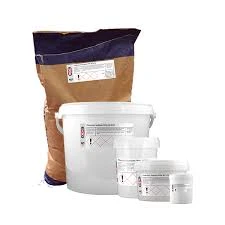
Frequently Utilized Food Preservation Techniques and Additives for Extended Freshness
Commonly Used Food Preservatives A Closer Look
Food preservation has been an essential practice throughout history, enabling communities to store and enjoy food for extended periods. As technology and science advance, a variety of preservatives have emerged to help maintain the flavor, texture, and nutritional value of food while preventing spoilage and foodborne illnesses. In this article, we will explore some of the most commonly used food preservatives, their functions, and safety considerations.
Types of Food Preservatives
1. Antimicrobials Antimicrobial preservatives inhibit the growth of bacteria, molds, and yeasts, which can cause food spoilage and illness. Common examples include sodium benzoate and potassium sorbate. Sodium benzoate is often used in acidic foods like salad dressings and carbonated beverages, while potassium sorbate can be found in cheese, yogurt, and dried fruits. Both prevent unwanted microbial growth and prolong shelf life.
2. Antioxidants Antioxidants protect food from oxidative damage, which can lead to rancidity, discoloration, and loss of nutrients. Common antioxidants include BHA (butylated hydroxyanisole), BHT (butylated hydroxytoluene), and ascorbic acid (vitamin C). These compounds are often added to fats, oils, and processed foods to stabilize them and keep them fresh longer.
3. Nitrates and Nitrites Sodium nitrate and sodium nitrite are widely used in cured meats like bacon, ham, and sausages. They not only enhance flavor and color but also prevent the growth of Clostridium botulinum, the bacteria responsible for botulism. However, concerns about the potential formation of carcinogenic nitrosamines during cooking have led to ongoing debates regarding their safety.
4. Acids Natural acids, such as citric acid and acetic acid, act as preservatives by lowering the pH of food, creating an environment that is inhospitable to bacteria. Citric acid is frequently found in soft drinks, candies, and jams, while acetic acid is the main component of vinegar, commonly used in pickling. These acids not only preserve food but also enhance flavor.
commonly used food preservatives

Safety and Regulations
The use of food preservatives is closely regulated by agencies such as the U.S. Food and Drug Administration (FDA) and the European Food Safety Authority (EFSA). These organizations assess the safety of preservatives based on scientific research and set permissible levels for their use in food products. While many preservatives are considered safe within regulated limits, some individuals may experience allergic reactions or sensitivities to certain additives.
Furthermore, the quest for natural food preservation methods has gained momentum, leading to the use of ingredients like rosemary extract and essential oils, which have shown antimicrobial properties. This shift is driven by consumer demand for clean-label products that contain fewer artificial additives.
Conclusion
Food preservatives play a crucial role in modern food production, ensuring the safety, quality, and longevity of food products. By inhibiting microbial growth, preventing oxidation, and maintaining color and flavor, these substances help meet the demands of a fast-paced, global food supply chain. Although the safety of certain preservatives remains a topic of discussion, regulations and ongoing research work to ensure that consumers receive safe, nutritious food.
As consumers, being informed about the ingredients in our food can empower us to make healthier choices. Whether opting for products with traditional preservatives, or exploring natural alternatives, understanding the role of food preservatives is an important aspect of food literacy in today's world. Keep this knowledge in mind when making dietary choices, and consider the balance between convenience, safety, and health.
-
Pure Sodium Dichloroisocyanurate Dihydrate | Powerful DisinfectantNewsAug.29,2025
-
Industrial Chemicals: Quality & Purity for Every IndustryNewsAug.28,2025
-
Nitrile Rubber Honoring Strict Production StandardsNewsAug.22,2025
-
Aspartame Ingredients Honoring Food Safety ValuesNewsAug.22,2025
-
Fertilizer for Balanced Plant NutritionNewsAug.22,2025
-
Cyanide Gold Processing with High Purity AdditivesNewsAug.22,2025
-
Formic Acid in Textile Dyeing ApplicationsNewsAug.22,2025
Hebei Tenger Chemical Technology Co., Ltd. focuses on the chemical industry and is committed to the export service of chemical raw materials.
-

view more DiethanolisopropanolamineIn the ever-growing field of chemical solutions, diethanolisopropanolamine (DEIPA) stands out as a versatile and important compound. Due to its unique chemical structure and properties, DEIPA is of interest to various industries including construction, personal care, and agriculture. -

view more TriisopropanolamineTriisopropanolamine (TIPA) alkanol amine substance, is a kind of alcohol amine compound with amino and alcohol hydroxyl, and because of its molecules contains both amino and hydroxyl. -

view more Tetramethyl Thiuram DisulfideTetramethyl thiuram disulfide, also known as TMTD, is a white to light-yellow powder with a distinct sulfur-like odor. It is soluble in organic solvents such as benzene, acetone, and ethyl acetate, making it highly versatile for use in different formulations. TMTD is known for its excellent vulcanization acceleration properties, which makes it a key ingredient in the production of rubber products. Additionally, it acts as an effective fungicide and bactericide, making it valuable in agricultural applications. Its high purity and stability ensure consistent performance, making it a preferred choice for manufacturers across various industries.





